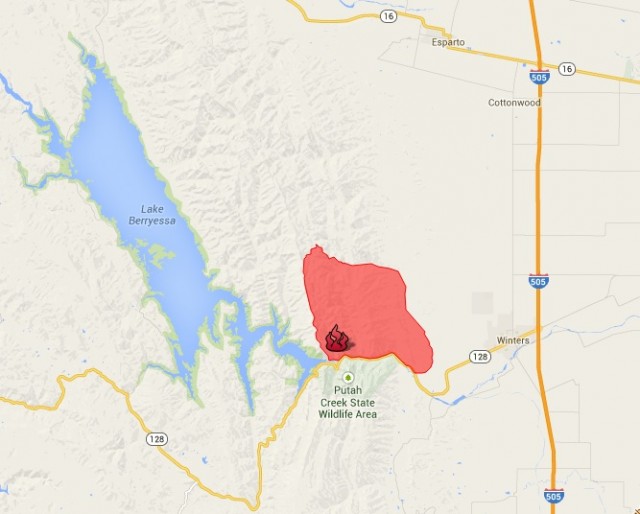
Update, 1 p.m. Friday: Cal Fire says it has achieved 95 percent containment on the 6,500-acre Monticello Fire, which broke out a week ago tonight near Highway 128, just southeast of Lake Berryessa. About 500 firefighters are still assigned to the fire, completing firelines and dousing hot spots within the blaze's perimeter.
The fire agency is asking the public for help in determining the cause of the fire, which at one point closed a stretch of Highway 128 and forced the evacuation of a subdivision west of the town of Winters.
Cal Fire's Dennis Mathisen says [investigators are] looking at the area between the Canyon Creek Resort and Pleasant Valley Road near Highway 128.
"If anybody has any information or saw anything that evening of July 4, around 9:30 in the evening, we're asking them to call our arson tip line," Mathisen said.
Update, 11 a.m. Tuesday: In its morning update on the Monticello
Fire, burning west of the Yolo County town of Winters and east of Lake Berryessa, Cal Fire says crews are making steady progress in containing the blaze.
As of 7 a.m., Cal Fire says, the blaze has consumed about 6,500 acres (the same figure released Monday morning) and that it's 55 percent contained (compared to 35 percent Monday). About 1,900 total personnel are fighting the fire.